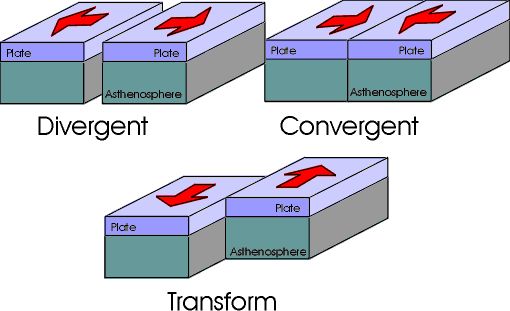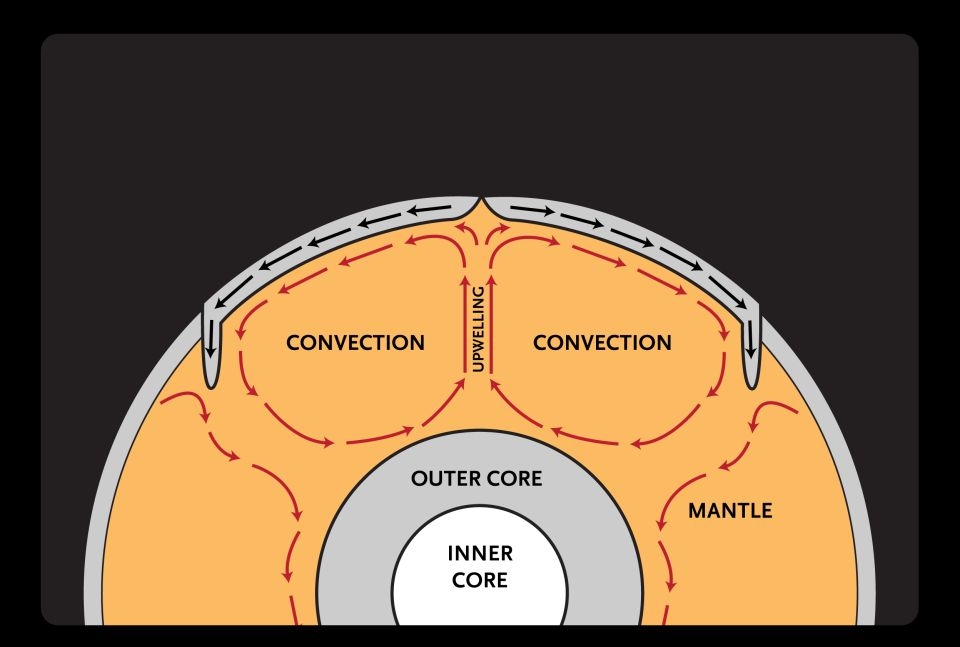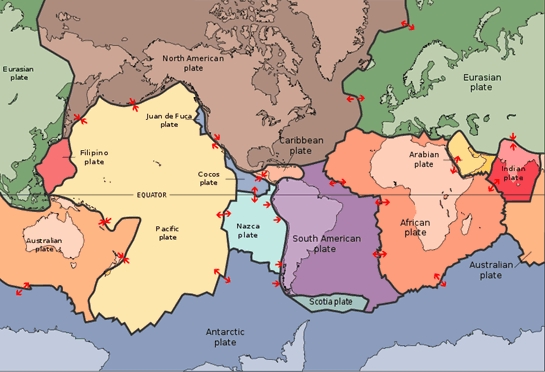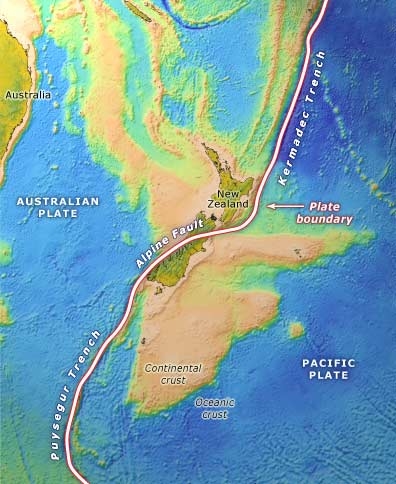Continental drift
Alfred Wegener, a German scientist, proposed a theory of continental drift. It is based on Earth's continents fitting together like a giant jigsaw puzzle. Continental drift explains how similar animals and plants could have lived at the same time on continents that are now widely separated by ocean, and how identical mountain ranges in different continents were once joined.
250 million years ago the Earth's continents were once joined together in one giant supercontinent called Pangaea. Slowly over millions of years Pangaea broke into Laurasia and Gondwana. These supercontinents have drifted apart forming the smaller continents of today.
Plate tectonics
Since the 1960s, detailed geological studies of the Earth’s crust have greatly increased our understanding of how the continents move. On the Earth today, there are 7 large plates and many smaller ones. They are made of blocks of continental and oceanic lithosphere (crust and upper mantle).
Oceanic crust is typically about 10km thick whilst continental crust is 30 – 50km thick, on average. With crust and upper mantle combined, the slabs of lithosphere are between 40 and 200km thick. These plates move in slow motion and are constantly changing shape.
It is thought that convection currents in the mantle of the Earth provide the energy to move the tectonic plates from a few millimetres to a maximum of about 15cm per year. This process is called plate tectonics.
Plate boundaries
At the edge of the tectonic plates one of three things may be happening:
- Divergent boundary: Also known as a spreading boundary, where two plates move apart allowing magma, or molten rock, to rise from inside the Earth to fill in the gap. The two plates move away from each other like two conveyor belts moving in opposite directions. This can create rift valleys on land or ocean ridges on the seafloor.
- Convergent boundary: Where two plates are colliding. Different things will happen depending on what type of plates are colliding:
- If the plates are continental plates they are of the same density so neither plate can over-ride the other and the landmasses buckle and fold, creating mountain ranges.
- If the plates are both oceanic plates then island arcs or basins can form.
- If an oceanic plate collides with a continental plate the denser oceanic plate will be subducted under the continental plate.
- Transform boundary: Where two plates slide against each other in a shear movement. But rather than sliding smoothly, the plates build up tension then release the tension with a burst of movement. This movement is felt as an earthquake.

Plate tectonics in New Zealand
New Zealand is located on the edge of two tectonic plates, the Indo-Australian and the Pacific plates. This position makes New Zealand geologically active with frequent earthquakes, geothermal areas and volcanoes.

This plate boundary has shaped New Zealand:
- to the east of the North Island the Pacific plate is being forced under the Indo-Australian plate (convergent boundary - subduction)
- in the South Island the two plates push past each other sideways (transform boundary)
- to the south of New Zealand the Indo-Australian plate is being forced under the Pacific plate (convergent boundary - subduction)
Watch the GNS Science animation (519k), showing the future shape and deformation of New Zealand if the movement measured between 1994 -1998 were to continue unchanged.
Ready for a quiz? Try "The Moving Crust" activity.






